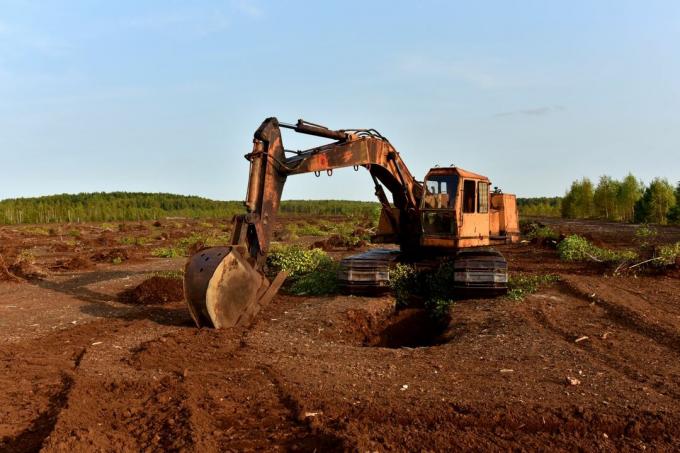You can read here why you should avoid potting soil containing peat and why peat-free soil is a real benefit.

Commercially available potting soil has nothing to do with the natural soil in our gardens and vegetable beds. The soil you buy, especially if it's the cheap supermarket soil, usually consists of peat. Some of the peat is still extracted in Germany, but more and more manufacturers are importing the limited raw material from the Balkan countries. The degradation of cheap potting soil irreparably destroys sensitive ecosystems and at the same time places a heavy burden on the climate.
Peat-free soil for climate protection
Peat for soil production is obtained exclusively from raised bogs. Many specialized animal and plant species live there that have adapted to the extreme living conditions in the acidic and nutrient-poor moor. Many species that live there are already on the red list of endangered species, and the raised bog ground beetle, like other animals, is even threatened with extinction. The extraction of peat contributes to the further shrinking of the habitat of endangered animals and plants. Another equally big problem is the emission of CO
2 during the degradation of the peat moss. The world's peatlands store just as much climate-damaging CO2 like all other vegetation on earth. By extracting peat, part of the stored CO2 released into the atmosphere and thus accelerate climate change. At least attempts are being made in Germany to renaturate the worked areas, i.e. to restore the area to its original state. But most of the peat already comes from other countries where environmental regulations are much more relaxed. And in general it is impossible to restore a bog to its original state after peat extraction. Incidentally, the worldwide peat reserves are said to be only available for approx. 50 years are enough, so a rethinking of potting soil production is essential one way or another.
Peat-free soil - a real benefit
Those who garden in an environmentally conscious manner will have already noticed that the range of peat-free soils on the market is increasing from year to year. So there are no more excuses not to use peat-free soils. Peat-free potting soil is suitable for all crops, whether fruit, vegetables or ornamental plants. Even for the acid-loving hydrangeas, there is already soil that does not require peat. In most cases, the peat in these soils is replaced by compost, wood fiber, coconut fiber, clay or perlite. These peat-free soils behave quite similarly to a peat soil. Often it is just that it has to be watered more often. However, this disadvantage is made up for by a significant advantage. Most gardeners are familiar with the problem of peat once it has dried out. When dried out, peat becomes water-repellent and can no longer store water. The peat-free alternatives don't have this problem and fare a lot better in this regard! Although the alternatives are usually more expensive than peat soil, you can use the peat-free soil with a clear and, above all, clear conscience.
Proven soils without peat
After clarifying why peat-free soil should be used and what advantages and disadvantages the whole thing entails, the question now arises as to which alternatives are already commercially available. Pressed briquettes made from coconut pulp are particularly suitable for domestic use or just for the balcony. Because they are pressed and sold dry, they are easy to transport and store. You only need a bucket and water to use it, where the coconut pith swells into ready-to-use soil. If you prefer the soil in the usual sacks, then that's no problem either.



